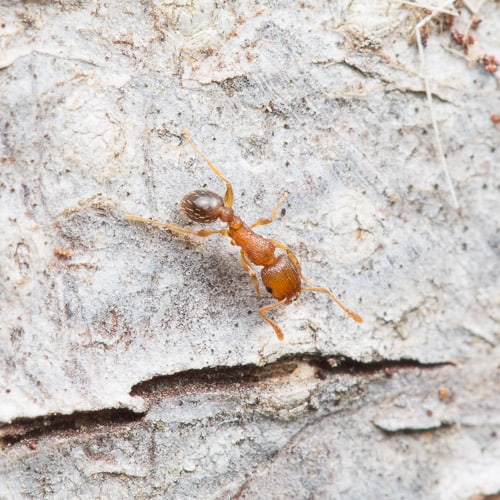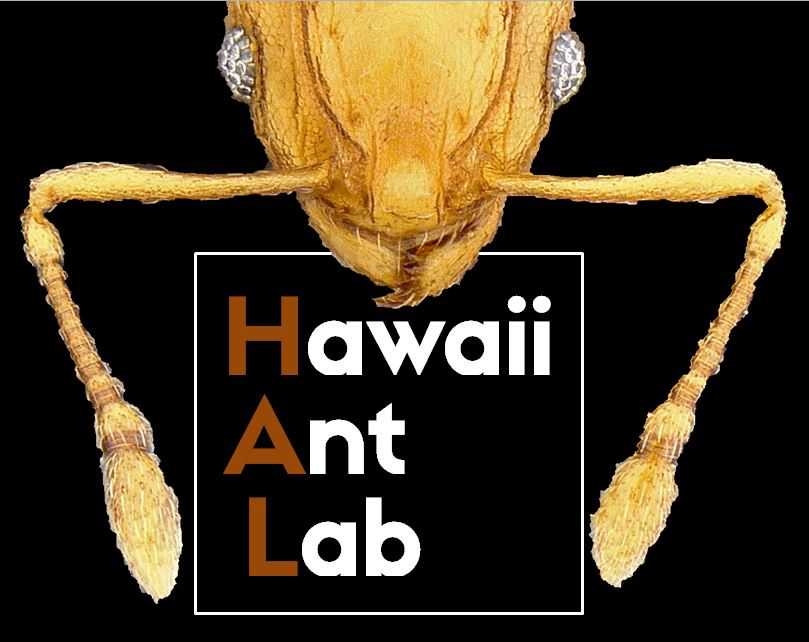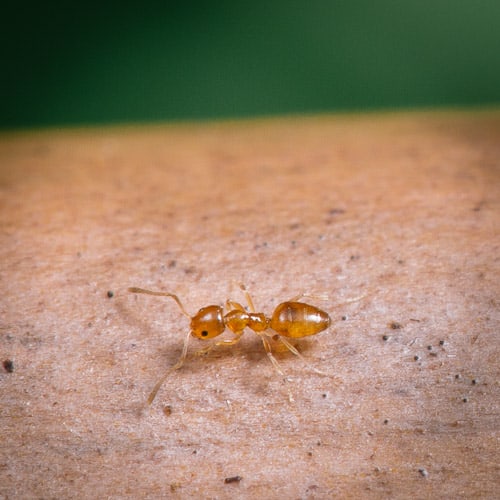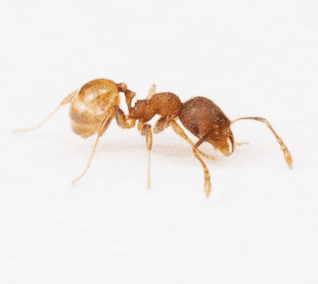Identifying Little Fire Ants
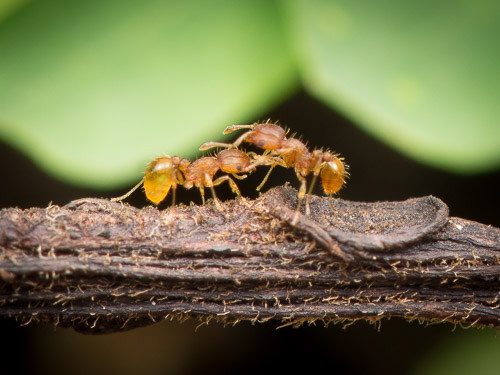
Wasmannia auropunctata, commonly known as the Little Fire Ant (LFA), are tiny (1/16 inch in length), orange colored, slow moving ants that pack a powerful sting.
How to identify
The Little Fire Ant
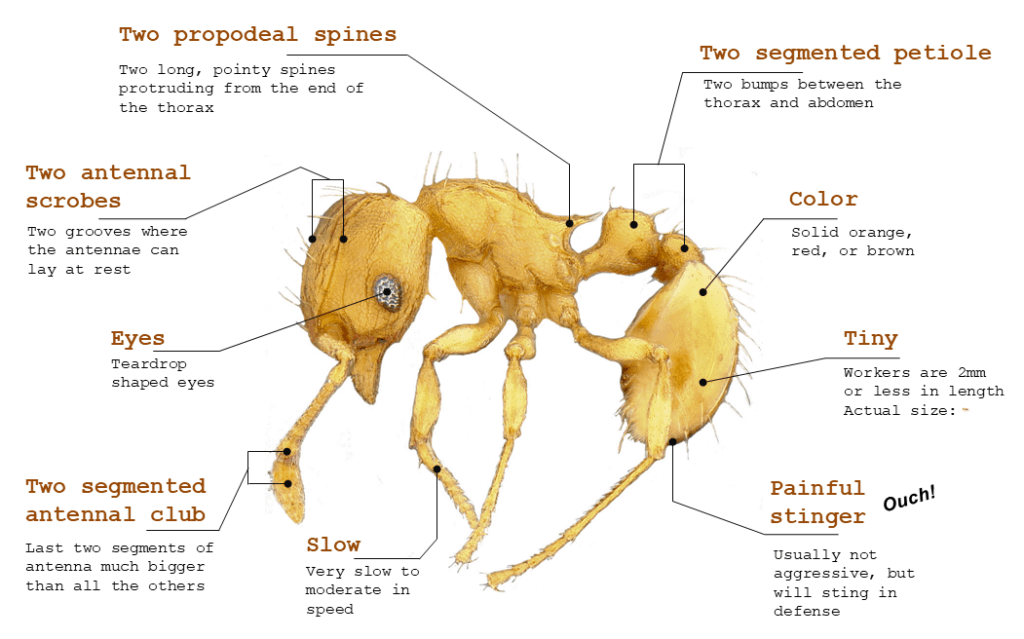
Reproductives
In a single colony of LFA, there are several queens. Queens are dark brown and are about 3 times the size of a worker at about 4.5-5.0 mm in length. The queens have a large gaster containing her reproductive system. When queens emerge from their pupal cocoon they have wings. After a queen has mated and has started a colony, she no longer needs them and the wings fall off.
Adult male LFA are also dark brown and are approximately 4.5mm in length. Like queens, males have wings but differ in having smaller heads, straight antenna (instead of elbowed as in queens), and conspicuous curved genitalia on their posterior ends.
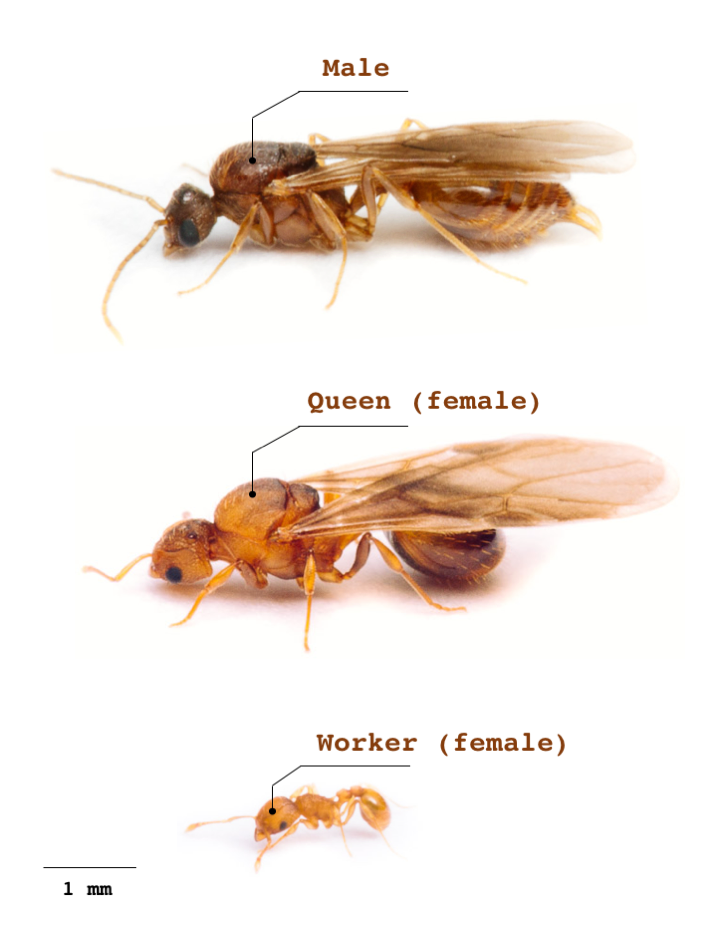
Life Cycle of LFA
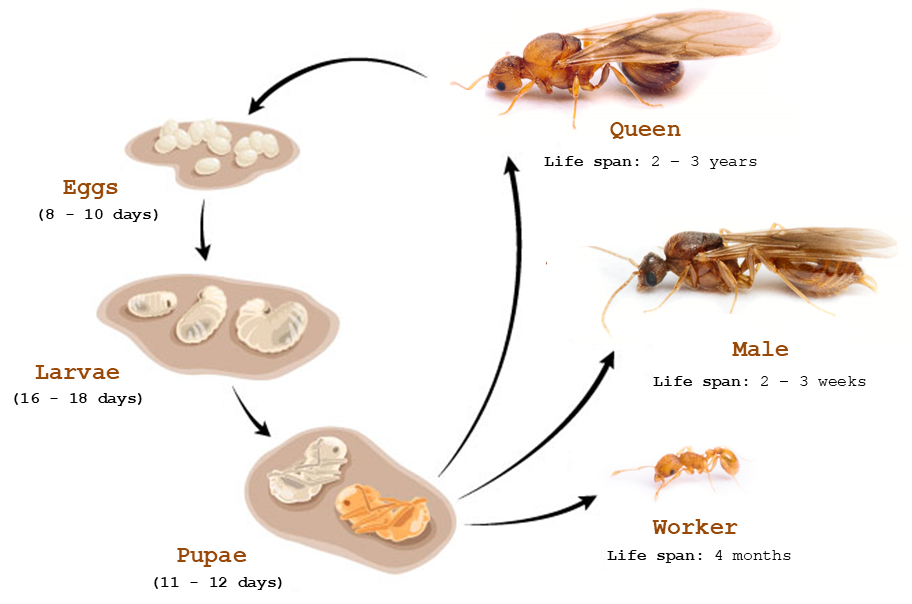
The life cycle of the ant consists of four stages: egg, larva, pupa, and adult. After 8-10 days, an egg hatches into a worm-shaped larva absent of eyes or legs. Larvae grow rapidly, relying on adult workers to feed them. When a larva reaches a certain size at about 16-18 days, it becomes a pupa. Pupae look more like adults, but their legs and antennae are folded against their bodies. Finally after 11-12 days, the pupa emerges as an adult.
Adult ants belong to one of three castes: queen, male, or worker. Workers are produced by sexual reproduction, while queens and males are produced clonally. After mating with the queen, the male dies shortly after, in 2-3 weeks. Queens can have a lifespan of 2-3 years while workers only live about 4 months.
LFA Look-a-likes
In Hawaiʻi, there are several other small, red ant species that be may mistaken for LFA. The only way to be sure if you have LFA on your property is to mail or bring your ant samples to our office for identification. Read our Guide on How to Survey for LFA for directions on surveying your property and where to send in samples.
The following ant species found in Hawaiʻi are commonly mistaken for LFA:
